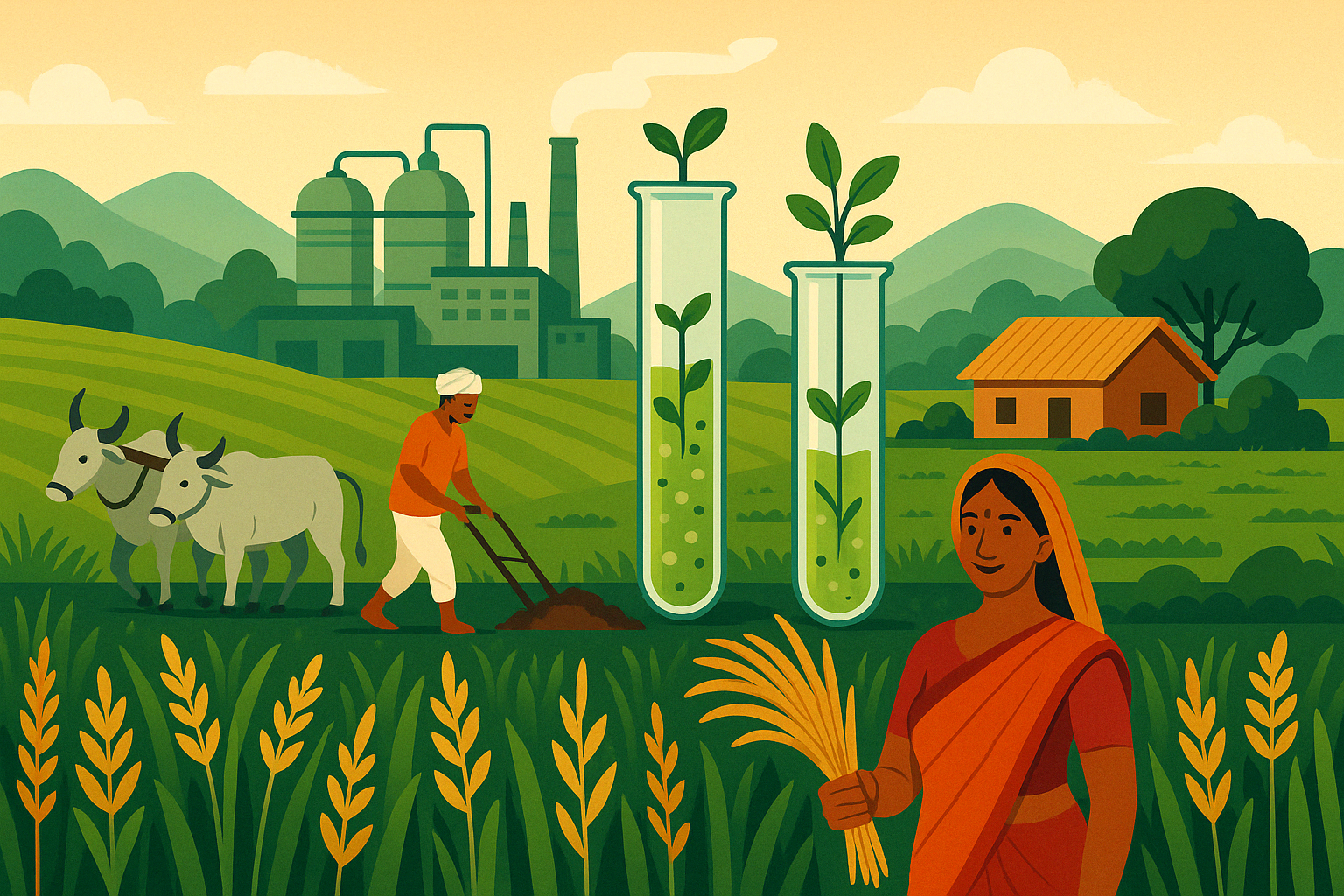Introduction
Climate technology is a fast-growing field that offers exciting new technologies that have the potential to mitigate the effects of climate change. The theme of COP28 is Accelerating Climate Action for the Global South, which focuses on reducing emissions, adapting to climate change, financing climate change, and developing climate tech solutions. COP28 provides a unique opportunity for global leaders to come together and agree on ambitious solutions. Climate technology plays a pivotal role in the fight against climate change, and COP28 offers a platform to showcase its potential. Together, we can create a sustainable future.
Market Size
According to Velox analysis, the market for climate technology is expected to grow significantly in the next decade, reaching over US$115 billion by 2030. The compound annual growth rate (CAGR) from 2023 to 2030 is predicted to be around 28%, indicating a substantial increase in demand and investment in innovative solutions to tackle global climate challenges.
Key Pillars of Climate Tech Innovation
Renewable Energy
- Renewable energy sources are a key aspect of climate tech. Solar, wind, and hydropower technologies have recently gained significant popularity, offering sustainable and clean alternatives to conventional fossil fuels. Companies like Tesla, renowned for its electric vehicles, also work towards energy storage solutions, contributing to the transition to a future powered by renewable energy.
- Some successful companies are Northvolt - a Swedish battery company; Ola Electric - an Indian electric vehicle company; and Octopus Energy - a British renewable energy company.
Carbon Capture and Removal
- Carbon capture and removal (CCR) technology is crucial in reducing greenhouse gas emissions, improving energy efficiency, creating job opportunities, and preserving the environment. While CCR faces challenges such as cost and regulatory compliance, several companies have successfully developed carbon capture technologies that directly capture carbon dioxide (CO2) from the air. The latest trends in CCR include direct air capture, bioenergy with carbon capture and storage, and nature-based solutions like planting trees. These technologies have a bright future in climate tech and can achieve net-zero emissions.
- Several companies use direct air capture (DAC) to remove CO2 from the atmosphere, including Climeworks' Orca plant in Iceland, Carbon Engineering's AirCapture, Global Thermostat, and Skyonic.
Sustainable Transportation
- Sustainable transportation is a crucial element in the fight against climate change. Reducing the necessity for travel, using more efficient vehicles and cleaner fuels, and improving infrastructure are key principles that can significantly reduce emissions, improve air quality, and alleviate traffic congestion. The demand for eco-friendly products and services is crucial in creating a sustainable transportation market. Governments, businesses, and individuals are leading in driving this demand. Educating consumers and incentivising sustainable technologies can pave the way for a more sustainable future in the climate tech and sustainable transportation sectors.
- Some successful companies are Proterra designs and manufactures electric buses. Volta provides free EV charging stations. Rivian develops electric pickup trucks and SUVs. Electrify America builds fast-charging stations for EVs across the US.
Circular Economy
- Climate tech innovations enable circular practices, shaping sustainable consumer demand. Advanced recycling, bio-based materials, and sustainable design provide solutions for waste management, resource recovery, and product life extension. Businesses adopt circular practices like extended producer responsibility, refurbished and secondhand markets, and sharing economy models.
- Pure Harvest Smart Farms, Biome Makers Inc., Klyk, and Grove Collaborative are successful companies in sustainable agriculture, biopesticides, digital platforms for farmers, and eco-friendly cleaning products, respectively.
Sustainable Agriculture
- Climate tech innovations like precision agriculture, vertical farming, regenerative agriculture, and alternative proteins are transforming agriculture towards more sustainable practices. Sustainable agriculture practices are gaining popularity due to consumer demand, government policies and incentives, and retailer and food service commitments. As these trends evolve, we expect to see accelerated adoption of climate tech solutions, widespread implementation of sustainable agriculture practices, and evolving consumer preferences. The intersection of these three forces holds immense promise for achieving a more sustainable and resilient food system.
Breakthrough Technologies
- Artificial Intelligence and Machine Learning: Artificial Intelligence (AI) and Machine Learning (ML) can revolutionise climate change by generating effective solutions to pressing environmental challenges. These technologies can enhance the precision of climate models, create novel renewable energy sources, and mitigate greenhouse gas emissions. By leveraging AI and ML, they can accelerate the development of sustainable solutions and address climate change-related issues with greater efficiency.
- Biotechnology: The intersection of biotechnology, innovation, and climate change leads to new solutions, e.g., algae strains that capture CO2 and climate modelling for adaptation. Climate tech and biotechnology converge in areas like developing new renewable energy sources, improving energy efficiency, capturing and storing CO2, developing climate-smart agriculture, and bioremediation. Convergence can revolutionise how we address climate change. We can create a sustainable and prosperous future by harnessing living organisms and technology.
- Internet of Things (IoT): The IoT is a network of physical devices, appliances, and other objects embedded with electronics and connectivity. IoT sensors can collect data on environmental parameters, track climate goals, and develop climate-resilient technologies. Combining Climate Tech and IoT can create a more sustainable future. Smart grids, precision agriculture, and forest fire monitoring are examples of how Climate Tech and IoT are used today. The potential for Climate Tech and IoT to address climate change is vast, and as these technologies continue to develop, we can expect to see even more innovative ways to use them.
- Quantum Computing: Quantum computing could revolutionise climate tech by solving pressing environmental challenges. This includes developing new materials and processes for renewable energy production and storage, optimising energy distribution and grid management, improving carbon capture and storage technologies, and modelling and predicting climate change. IBM Research, Google AI, Microsoft Quantum, and PSI Quantum are among the companies working at the intersection of climate tech and quantum computing.
Investment and Funding Landscape
The escalating climate crisis has thrust climate technology into the forefront of global investment considerations. The world is racing to mitigate climate change. As a result, the demand for innovative solutions has reached unprecedented levels, driving a surge in funding and investment in climate-related technologies.
Overview of Climate tech investment trends
- Global investment in climate tech reached $214B in 2022, a 24% increase from 2021. However, H1 2023 funding declined by 40% compared to H1 2022, with total funding reaching $57.3B. Renewable energy and energy storage accounted for the highest investment in both years, followed by transportation, mobility, and industrial decarbonisation.
- Investors increasingly focus on technologies that address emissions from heavy industries, such as cement production, steelmaking, and chemical manufacturing. Carbon capture and storage (CCS) is gaining momentum as a potential solution for reducing emissions from hard-to-abate sectors.
- Despite economic uncertainty and geopolitical tensions, corporate venture capital activity is rising, with corporations increasingly investing in climate tech startups. Institutional investors also allocate more capital to climate tech, driven by ESG considerations. Climate tech hubs are emerging worldwide, providing startups access to capital, expertise, and networking opportunities.
- Climate tech investment is diverse and spans various sectors and technologies, including renewable energy, energy efficiency, carbon capture and storage (CCS), sustainable transportation, and sustainable agriculture. Renewable energy sources, such as solar and wind, attract significant investment as countries seek to transition away from fossil fuels. Technologies that improve energy efficiency in buildings, transportation, and industrial processes are also gaining traction. CCS technologies aim to capture and store carbon emissions, preventing them from entering the atmosphere. Electric vehicles, autonomous vehicles, and other low-carbon transportation solutions are attracting growing investment. Technologies that promote sustainable farming practices and reduce agriculture's environmental impact are also gaining attention.
Government Initiatives and Policies supporting climate tech
- Governments worldwide act against climate change by investing in climate tech, setting emissions targets, and implementing carbon pricing schemes. In 2023, notable government initiatives included the EU's REPowerEU plan to double renewable energy capacity, the US Inflation Reduction Act's tax credits for clean energy, and China's commitment to peak carbon emissions by 2030.
- In 2023, investment in climate tech companies reached a record high of $1.7 trillion, driven by the urgency to address climate change, declining costs of clean energy technologies, and growing investor interest. Carbon capture and storage technology investment is rapidly increasing, and electric vehicle sales continue to rise due to government incentives, declining battery costs, and consumer demand.
- In 2024, climate tech investment is expected to increase, with more government support for climate tech initiatives and deployment of clean energy technologies expected to accelerate. Climate adaptation technologies will see more investment, and collaboration between governments and other organisations is expected to increase. We anticipate more climate tech startups emerging in 2024, bringing new ideas and solutions.
Private Sector and Venture Capital Involvement
- The private sector and venture capital (VC) are increasingly important in financing climate tech innovation. In 2023, VC investment in climate tech reached $638bn, with notable trends including increased investment in early-stage companies, growing focus on carbon capture and storage (CCS), and more emphasis on climate adaptation. Looking ahead to 2024, VC investment is projected to grow, with more focus on emerging markets and climate adaptation solutions. There will also be greater collaboration between the private sector and government in addressing climate change.
Challenges of Climate Tech
- Technological Maturity and Deployment: Numerous climate technologies are still in the early stages of development, and they need further research, testing, and refinement before they can be extensively implemented. Moreover, scaling up these technologies to meet the increasing global demand for climate solutions could pose significant cost, infrastructure, and supply chain challenges.
- Cost and Accessibility: Climate technologies require significant investments, limiting their accessibility to marginalised communities and developing countries. This exacerbates inequalities and hinders global efforts to address climate change. Strategic partnerships between governments, international organisations, and the private sector can promote equitable access and foster sustainable development.
- Unintended Consequences: Implementing climate technologies has the potential to yield unanticipated and unintended consequences for the environment, ecosystems, and human health. A thorough and rigorous evaluation of potential risks is essential to minimise these outcomes. Therefore, proper risk assessment and monitoring are necessary to mitigate risks arising from implementing these technologies.
- Public Acceptance and Social Impact: The widespread adoption of climate technologies heavily relies on gaining public acceptance. To this end, addressing potential risks, ensuring transparency, and involving communities in decision-making is imperative. These measures are critical for building trust and fostering social acceptance, which, in turn, can facilitate the successful implementation of climate technologies.
Ethical Considerations in Climate Tech
- Equity and Justice: Climate change affects vulnerable communities, especially in developing nations. Climate tech solutions must prioritise equity and environmental justice by promoting sustainable and just development through collaboration between businesses and academics.
- Sustainability and Long-term Impacts: To develop effective climate technologies, we must take a multi-faceted approach that balances immediate challenges with long-term sustainability. Considering environmental impact and developing responsible, sustainable, and effective solutions is crucial. Doing so can mitigate climate change's adverse effects and ensure a better future for future generations.
- Governance and Regulation: Effective governance frameworks are essential for responsible development and use of climate technologies. They promote transparency, accountability, and stakeholder trust while minimising risks and ensuring compliance with ethical principles. These frameworks encourage innovation and collaboration for more equitable and effective outcomes and must be designed and implemented with professionalism and expertise.
- International Collaboration and Knowledge Sharing: Efficiently addressing the issue of climate change necessitates global cooperation and knowledge exchange. Promoting an open-minded collaboration between researchers, policymakers, and industry stakeholders is indispensable to expedite developing and deploying environment-friendly technologies.
- Public Engagement and Participation: Public engagement is crucial in the climate tech innovation process. Communities must be involved in decision-making, have access to information, and their views must be heard. Effective engagement can promote ownership, build trust, and improve outcomes.
The Role of Collaboration
Developing and deploying new technologies that can help mitigate or adapt to climate change is known as Climate Technology or Climate Tech. Public-private partnerships (PPPs) can play a vital role in accelerating the adoption of Climate Tech by combining the resources and expertise of both the public and private sectors.
PPP (Public Private Partnership) Collaboration
- Public-private partnerships (PPPs) provide access to capital, foster knowledge transfer, and mitigate risks associated with Climate Tech investments. PPPs leverage the strengths of both sectors to achieve greater impact.
- The Mission Innovation Mission 2030 and the Green Climate Fund are examples of successful PPPs. The former aims to accelerate the development and deployment of clean energy technologies, while the latter provides grants and loans to developing countries for climate change projects. Overall, PPPs offer a robust framework for developing and deploying Climate Tech solutions, making them more attractive to private investors.
Business Collaboration
- Business collaboration can help address the climate crisis by sharing emission reduction methods, investing in clean tech, and creating eco-friendly products. Benefits include cost savings, increased innovation, and improved reputation. Examples of business collaboration include the RE100, a coalition of businesses committed to 100% renewable energy, and the Science Based Targets Initiative (SBTi), which helps businesses set ambitious greenhouse gas reduction targets.
Our Perspectives
Climate change is an urgent threat to humanity, requiring transformative solutions. Climate tech offers innovative ways to reduce greenhouse gas emissions and foster sustainability across various sectors. This broad range of solutions includes renewable energy sources, energy efficiency technologies, carbon capture and storage, sustainable agriculture and forestry practices, and climate adaptation technologies.
Climate tech is already making significant strides in addressing climate change, such as accelerated growth of renewable energy, advances in energy storage, emergence of sustainable food alternatives, and development of climate-resilient infrastructure. However, substantial challenges remain, including scaling up deployment, addressing affordability, and overcoming regulatory hurdles.
To enhance the transformative impact of climate tech, increasing public and private investments, strengthening policy frameworks, fostering collaboration and innovation, prioritising equity and accessibility, and raising public awareness and engagement are crucial. By addressing these challenges and implementing these recommendations, we can harness the power of climate tech to create a more resilient, equitable, and environmentally responsible world.
Velox Consultants is one of the fastest-growing market research and strategy consulting firms, recently recognised by Clutch. We specialise in providing customised research reports and Go-to-Market (GTM) strategies that cater to the specific needs of companies across the Energy and CleanTech sectors.
Our team of highly skilled professionals is well-equipped to help your company stay ahead in such a dynamic and competitive market. To learn more about our services or discuss your requirements, please get in touch with us at consult@veloxconsultants.com.





